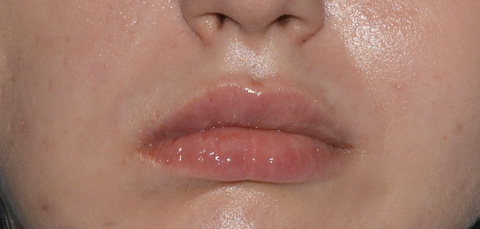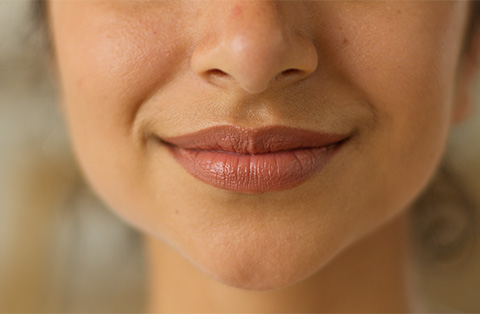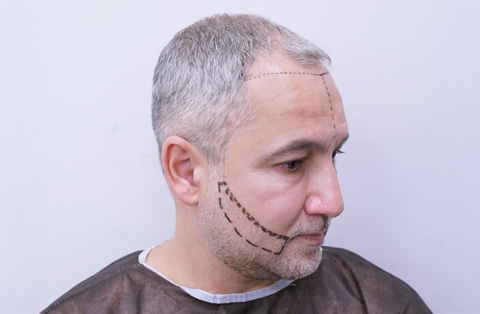Uneven lips can affect facial harmony and confidence. From fillers to surgery, discover the best solutions to achieve symmetrical, balanced lips. Explore effective treatments for a natural, even look.
What Causes Lip Asymmetry?
Lip asymmetry can result from various factors. Some people are born with uneven lips, while others develop asymmetry over time. The causes include:
Genetics: Natural variations in lip shape and size.
Aging: Loss of collagen and muscle tone can lead to uneven lips.
Dental Issues: Misaligned teeth or jaw problems may affect lip balance.
Nerve Damage: Facial nerve injuries or conditions like Bell’s palsy or other facial paralysis can cause asymmetry.
Trauma or Surgery: Injuries or past procedures may alter lip shape.
Lifestyle Habits: Repeated facial expressions or habits like sleeping on one side can contribute.
Identifying the cause helps determine the best treatment option.
How to Fix Uneven Lips?
Fixing uneven lips depends on the underlying cause and the desired outcome. Treatment options range from non-invasive methods to surgical procedures. Here are the most common approaches:
Non-Surgical Treatments
Dermal Fillers
Hyaluronic acid fillers, such as Juvederm or Restylane, can add volume and correct asymmetry. A skilled injector can shape the lips to achieve a more balanced look. The results are temporary, usually lasting 6 to 12 months.
Botox Injections
If muscle imbalance causes lip asymmetry, Botox can relax overactive muscles and improve symmetry. This is useful for conditions like a crooked smile due to nerve issues. Results last about 3 to 4 months.
Lip Exercises and Massage
In mild cases, targeted facial exercises and massages may help improve muscle coordination and enhance lip symmetry over time.
Surgical Treatments
Lip Lift
A surgical lip lift shortens the distance between the upper lip and nose, enhancing balance. This is suitable for people with natural asymmetry or aging-related lip changes.
Lip Implants
For a permanent solution, silicone or fat grafting can add volume and correct uneven lips. Fat grafting uses the patient’s fat, making it a natural alternative.
Corrective Surgery for Nerve Damage
If asymmetry is due to nerve injury, reconstructive surgery may restore muscle function and improve lip balance.
Dental or Orthodontic Treatments
Dental treatments can be the solution if jaw misalignment or dental issues cause uneven lips, braces, Invisalign, or jaw surgery may help improve symmetry.
Makeup Techniques
For a temporary fix, makeup can create the illusion of symmetrical lips. Lip liner and lipstick can define and balance the shape.
Choosing the Right Treatment
The best treatment depends on the cause, severity, and patient preference. A consultation with a qualified specialist ensures the most effective and natural-looking results.
Can a Facelift Fix Uneven Lips?
Yes, a facelift can be a treatment for asymmetrical lips, but only in specific cases. A facelift primarily tightens and lifts sagging skin on the face and jawline. However, it can indirectly improve lip symmetry if aging-related skin laxity or muscle sagging affects the lips.
Corrects Age-Related Lip Imbalance: If one side of the face sags more than the other, a facelift can restore balance.
Improves Muscle Tone: A facelift tightens facial muscles, which may help with mild asymmetry.
Enhances Overall Facial Proportions: Lifting the lower face and jawline can create a more symmetrical appearance, which can impact how the lips look.
Limitations of a Facelift for Lip Asymmetry
A facelift does not directly change lip shape or size. If the asymmetry is due to genetics, nerve damage, or dental issues, other treatments like fillers, Botox, or lip reconstruction surgery may be more effective.
For the best results, a plastic surgeon can evaluate whether a facelift, combined with other procedures, is the right option.
When to Consider Plastic Surgery for Asymmetrical Lips?
Plastic surgery for asymmetrical lips may be an option when non-surgical treatments are not enough. Consider surgery if:
Severe Asymmetry: When the imbalance is noticeable and affects facial harmony.
Persistent Lip Imbalance: If fillers or Botox provide only temporary or limited improvement.
Functional Issues: Difficulty speaking, eating, or closing the lips properly due to asymmetry.
Nerve Damage: If a previous injury or condition, like Bell’s palsy, causes uneven lip movement.
Desire for Permanent Results: Unlike fillers, surgical options like a lip lift, lip implants, or fat grafting provide long-term correction.
A consultation with a plastic surgeon can help determine if surgery is the best approach.
Understanding Lip Surgery Procedures
Lip surgery can correct asymmetry, enhance shape, and improve facial balance. Depending on the cause and severity of the asymmetry, different surgical options are available.
1. Lip Lift
A lip lift shortens the space between the nose and upper lip, enhancing definition and symmetry. This is ideal for those with uneven upper lips or age-related sagging. The results are permanent.
2. Lip Implants
Silicone lip implants provide a permanent solution for volume loss and asymmetry. The procedure involves inserting a soft, flexible implant through small incisions at the corners of the mouth.
3. Fat Grafting (Lip Fat Transfer)
This procedure uses fat from the patient’s body (often from the abdomen or thighs) to add volume and correct asymmetry. Since the fat is natural, results can be long-lasting, though some fat may be reabsorbed over time.
4. Corrective Surgery for Nerve Damage
If nerve injury causes lip asymmetry, reconstructive surgery may help restore muscle function and improve balance. This can involve nerve grafting or muscle repositioning.
Choosing the Right Procedure
The best option depends on the patient’s facial structure, cause of asymmetry, and desired outcome. A consultation with a plastic surgeon helps determine the most suitable approach.
Are There Facial Exercises to Improve Lip Appearance?
Facial exercises may help with mild lip asymmetry by strengthening and toning the muscles around the mouth. While they cannot drastically change lip shape, they may improve balance and enhance symmetry over time.
1. Lip Stretch Exercise
Smile as wide as possible while keeping lips closed.
Hold for 5 seconds, then relax.
Repeat 10–15 times.
2. Pursed Lip Exercise
Purse lips as if blowing a kiss.
Hold for 5 seconds, then release.
Repeat 10 times.
3. Resistance Exercise
Place a finger on each corner of the mouth.
Gently pull outward while trying to bring lips together.
Hold for 5 seconds and repeat 10 times.
4. Straw Exercise
Drink through a straw while focusing on keeping both sides of the lips even.
Repeat daily to strengthen lip muscles.
Do Facial Exercises Work?
Exercises may help improve muscle coordination but do not replace medical treatments for significant asymmetry. For noticeable results, fillers, Botox, or surgery may be more effective.
What are Lip Tattoos and Can They Correct Lip Asymmetry?
Lip tattoos, also known as lip blush tattoos or permanent lip makeup, enhance lip color and shape using semi-permanent pigment. While they do not physically change lip structure, they can create the illusion of more symmetrical lips.
How Lip Tattoos Help with Asymmetry
Enhance Lip Borders: Skilled tattoo artists can reshape the lip outline to make both sides appear even.
Add Definition and Color: Soft shading can improve balance and fullness.
Camouflage Minor Unevenness: Pigment placement can minimize visible asymmetry.
Limitations of Lip Tattoos
Do Not Change Lip Size or Muscle Function: They only improve the appearance, not the actual structure.
Results Are Semi-Permanent: Typically last 2–5 years before fading.
Not Suitable for Severe Asymmetry: Surgical or injectable treatments may be needed for significant imbalance.
Who Should Consider Lip Tattoos?
Lip tattoos are ideal for those with mild asymmetry looking for a non-invasive, long-lasting cosmetic enhancement.






